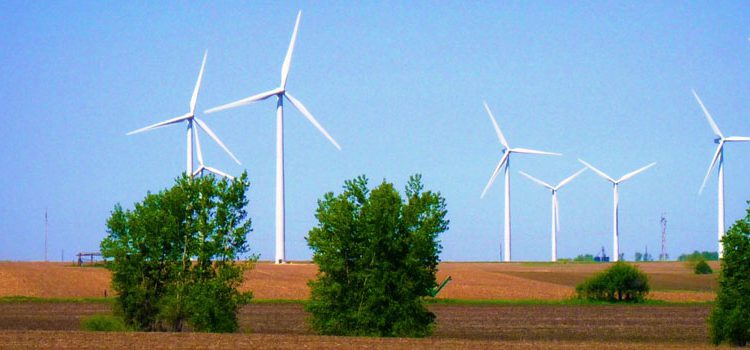1. It’s usually on someone else’s land. Whether the wind farm development will be located on agricultural land, mining property, government land or any other type of real property, a developer needs the right to use the land to house wind turbines, transmission lines and related wind energy facilities.
The developer also needs the right to travel across the land to access the equipment for maintenance, repair, replacement and removal. As such, developers must obtain written leases, easements, licenses or other agreements which provide for the right to use the land, as well as the right to prevent the property owner from interfering with the developer’s project, equipment or wind flow. For instance, it would not be acceptable for the property owner to place a structure in close proximity to a turbine, which could deflect the wind.
2. The land must be zoned for wind energy development. It is not sufficient to have a written agreement with the landowner permitting use of the land for wind energy facilities. The developer must insure that the land is zoned for this use or the applicable municipality may prevent the development. The developer must review the relevant zoning ordinances for the property and determine whether a wind farm is a “use by right” in the particular zone district, meaning that it requires no further municipal approval. Otherwise, operating a wind energy facility may require special approval of the municipality, which could include a plan review process and even public hearings.
3. The developer needs legal access to the property. Wind farms tend to be located in rural areas. Adjacent roadways may not be for public use or may require special permits. They may be private roads owned by neighboring landowners or railroad companies. It is critical for wind energy developers to review access rights. It is also helpful to obtain an ALTA survey of the wind farm property which depicts roadway access, and to obtain title insurance covering access to the property.
Several years ago, I represented a major energy company in the development of a wind farm in central Utah. Before I became involved in the project, the company obtained rights to use the land. They engaged me after the fact to help them get a survey and title policy for their files. Upon reviewing the title documents and survey it became evident that there was no legal access to the property. The road used by the landowner to access the property, it turned out, was actually owned by a railroad company. This railroad company would only give my client a license to use the road which was revocable at any time upon 30 days prior notice, which is not ideal. At the end of the day, we obtained alternate access across the neighbor’s property to be used in case the railroad license was ever revoked. It certainly would have been a better negotiating position for my client to have approached the neighbor and the railroad company before installing its wind energy facilities. I’m fairly certain the access rights would have been less costly.
4. The energy must be transmitted across roads and other real property. Transmission lines traverse the land in order to transmit energy from wind turbines to the energy grid, crossing over public and private lands. The energy developer must have agreements with all landowners in the path of the transmission line to cross over and use the airspace above each strip of land. Absent such agreements, the developer is trespassing.
5. The developer might need funding. Some energy companies and wind energy developers self-fund wind farms. As such, they are less concerned with issues that a lender would raise, such as requiring title insurance policies with access and zoning endorsements. I believe this is a mistake. If the developer ever wishes to sell or finance the wind energy project in the future, the purchaser or lender will likely require resolution of material real estate law issues. If, for instance, there is a title defect such as lack of legal access to the property, the sale or financing may be thwarted and the value of the wind farm greatly diminished.
Wind energy developers should take the time to properly ascertain the real property law implications of their development and solve title, zoning or other real estate issues to avoid a bad investment. Note that the five items listed above are not the only real estate law issues to be considered while undertaking a wind energy project. We recommend obtaining competent legal counsel to help navigate these and any other matters which may arise.



Comments are closed